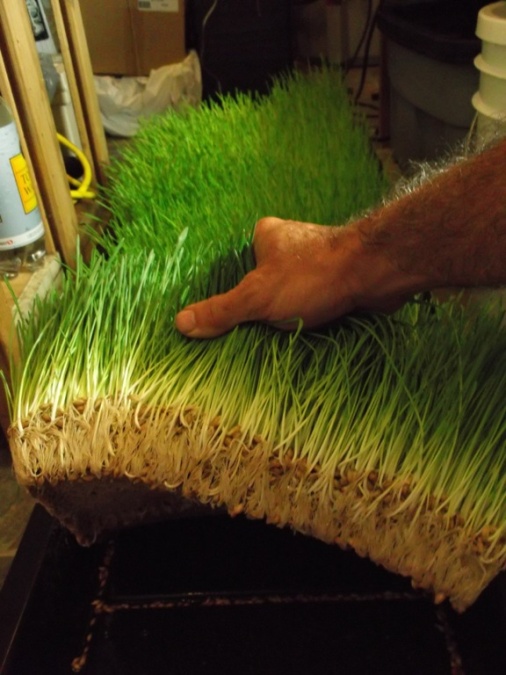Dr. Kathy Soder (USDA-ARS) and Dr. Bradley Heins (University of Minnesota)
Full report with figures and tables
Sprouted grains for dairy cows¶
- Old technology with renewed interest.
- Potential for continuous production of fresh forage all year.
- Viewed by some as ‘easier’ alternative to growing high-quality forages.
Unanswered questions¶
- Effects of sprouted barley on milk yield, milk composition and economics
- No data about feeding value of sprouted barley with high-quality pasture and conserved forages
Our objective was to evaluate the feasibility, effectiveness and challenges of implementing sprouted barley fodder systems on grazing dairy farms.

What Did We Do?¶
Sprouting Study: Five grains (barley, oats, wheat, rye, and triticale) were sprouted for 7 days in a fodder system and analyzed for yield and nutritional content. (Univ. of MN)
Cow Study: Lactating dairy cows were fed a TMR (during the winter) containing either: 1) no fodder; or 2) 3 lb DM/cow/d sprouted barley fodder. Milk production, milk composition and income over feed costs (IOFC) were evaluated. (Univ. of MN)
On-farm Case Study: Three organic dairies that fed fodder were monitored monthly for 12 months to collect data on feed nutritional analysis, milk production/composition and management information. (USDA-ARS)
Results¶
Sprouting Study
- Barley and oats had greatest fresh weight
- Oats had greatest DM yield
- Barley and wheat had the highest protein %
- Barley had lowest mold score
Cow Study
- DM intake and milk protein % lower in cows fed fodder
- Milk yield and milk fat % similar with or without fodder
- Cows fed fodder had higher milk urea nitrogen, suggesting less efficient use of feed protein
- IOFC favored NOT feeding fodder except when organic corn prices increased by 50%
On-farm Case Study
- Two farms discontinued feeding fodder during the study, due to labor, cost of production, barley supply and mold issues
- No milk response was noted in 2 of the farms. Both farms produced high-quality for-ages which were more economical to feed and pro-duced a better milk response
- One farm was small (20 cows) & used a low-input, home made system. Home-grown forage quality was marginal, therefore fodder may have provided better nutrition and better milk response
Conclusions¶
Fodder systems may be a costly method of producing feed for dairy producers. However, fodder may have application in small-scale operations, farms with high land values where tillable acreage can produce high-value crops, or for producers experiencing severe, extended drought. Additionally, farms that have an excess of labor may benefit from a fodder system. Each farm must put pencil to paper to determine if implementing fodder in feeding management is economical, making sure to include ALL costs in deciding whether the money could be better spent growing or purchasing higher-quality forage.